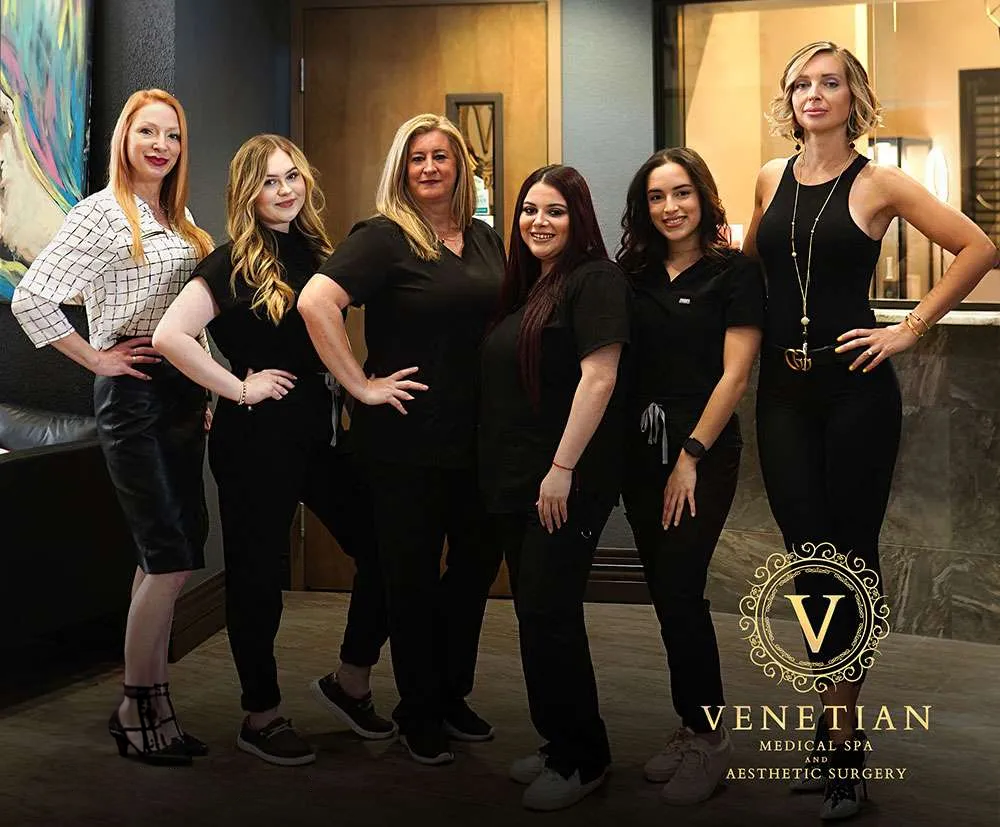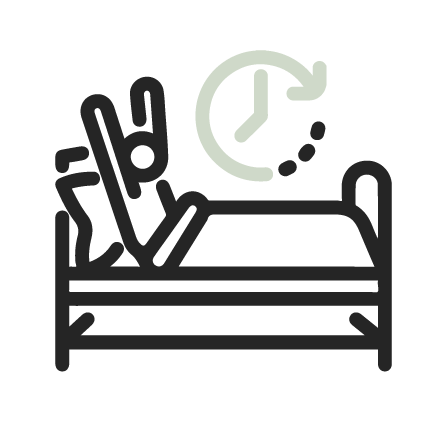What Are Spider Veins?
(Telangiectasias)
Spider veins, also known as spider telangiectasias, are chronic dilatations of capillaries and small blood vessels. While smaller than varicose veins, both conditions are visible through the skin. Spider veins develop because of an increase in pressure inside the veins. The cause can be the result of blood circulation problems. Also, certain risk factors can make you more likely to have spider veins. Spider veins are a common cosmetic concern and can be effectively treated through innovative procedures at the Venetian Medical Spa, where we specialize in non-invasive medical treatments.
Trust in our expertise to tailor an effective strategy to treat spider veins that prioritizes your well-being and appearance.
-
WHAT IS THE DOWNTIME?
Generally there is minimal downtime, but may vary depending on the treatment method.
-
WILL I HAVE RESTRICTIONS?
Wearing compression stockings is recommended for 1-2 weeks. Avoid sun exposure on treated areas, and avoid strenuous activity for a few days.
-
WHO IS A GOOD CANDIDATE?
Female or male non-smokers, generally in good health, and bothered by the appearance of the veins.
When to Consider Treating Spider Veins
Deciding whether or not to treat spider veins is personal, and there's no single "right" answer for everyone. Here are some factors to consider that might help you decide if treatment is the right choice for you:
Cosmetic Concerns
Appearance: If the spider veins bother you cosmetically and affect your confidence, treatment might be a good option.
Location: Spider veins on the legs are most common but can also appear on the face. Treatment might be appealing if they're in a visible area you frequently see and dislike.
Severity: The number, size, and color of the veins can influence your decision. You might be more likely to seek treatment if they're numerous, prominent, or have an unappealing color.
Physical Symptoms
Pain or discomfort: Some people experience itching, burning, or aching around spider veins. If these symptoms cause significant discomfort, treatment can provide relief.
Swelling: In rare cases, spider veins can cause leg swelling. Consulting a doctor to determine the cause and discuss treatment options is crucial if this occurs.
Risk Factors
Family history: A family history of varicose or spider veins can increase your risk of developing them and their complications. Early treatment might be considered to prevent further progression.
Pregnant or breastfeeding: Due to hormonal changes, spider veins are common during pregnancy. Treatment is generally not recommended during this time, but discussing options with your doctor is advised.
Underlying medical conditions: Certain medical conditions like obesity or blood clotting disorders can increase the risk of complications from spider veins. Consulting your doctor for advice based on your specific situation is essential.
Treatment Options
Non-invasive: Several minimally invasive procedures like sclerotherapy, laser therapy, and radiofrequency ablation are available. They have minimal downtime and offer good cosmetic results.
Invasive: In rare cases, vein stripping surgery might be needed for larger or more complex spider veins. This invasive procedure has a longer recovery time.
Ultimately, the decision to treat spider veins is yours. Consulting a qualified dermatologist or vascular specialist can provide expert advice and personalized recommendations based on your situation. Don't hesitate to ask questions and discuss your concerns to make an informed decision that best suits your needs and preferences.
Recovery and Downtime
The recovery and downtime following the treatment of spider veins is typically minimal but varies depending on the treatment method, the number and size of the treated veins, and your healing rate (some people heal faster than others).

The most common options include:
- Sclerotherapy: Injections of a solution to collapse and fade the vein.
- Laser treatment: Uses lasers to heat and seal the vein shut.
- Radiofrequency ablation: Uses radiofrequency energy to heat and close the vein.
- Foam sclerotherapy: Uses a special foam solution for larger spider veins.
- Combination therapy: Combining different methods for optimal results.






